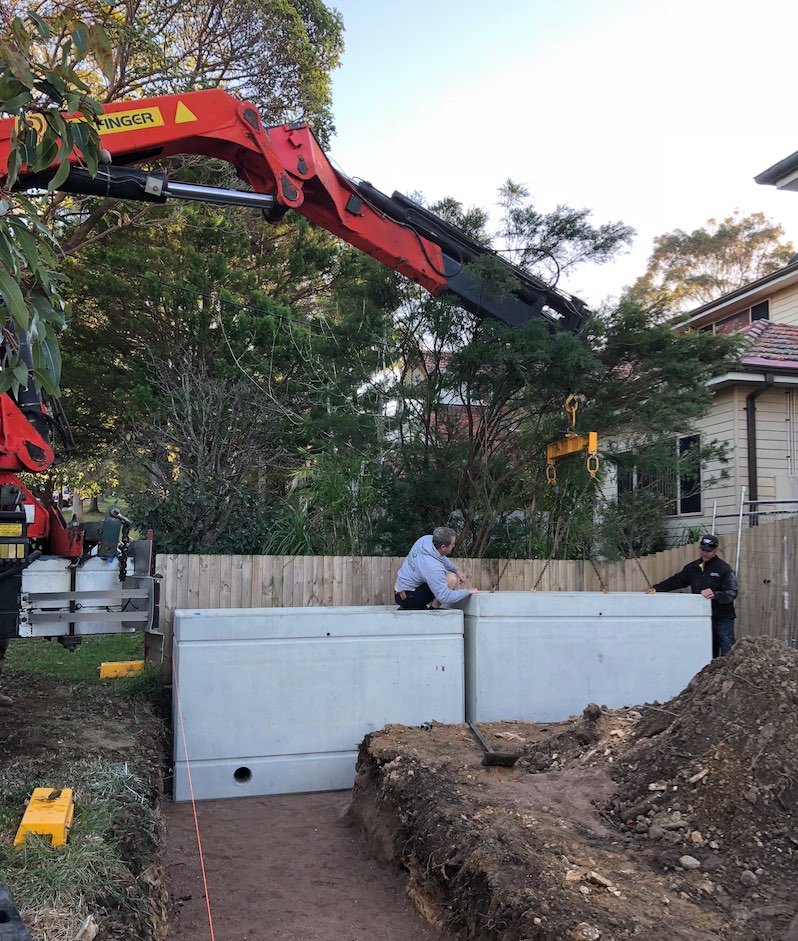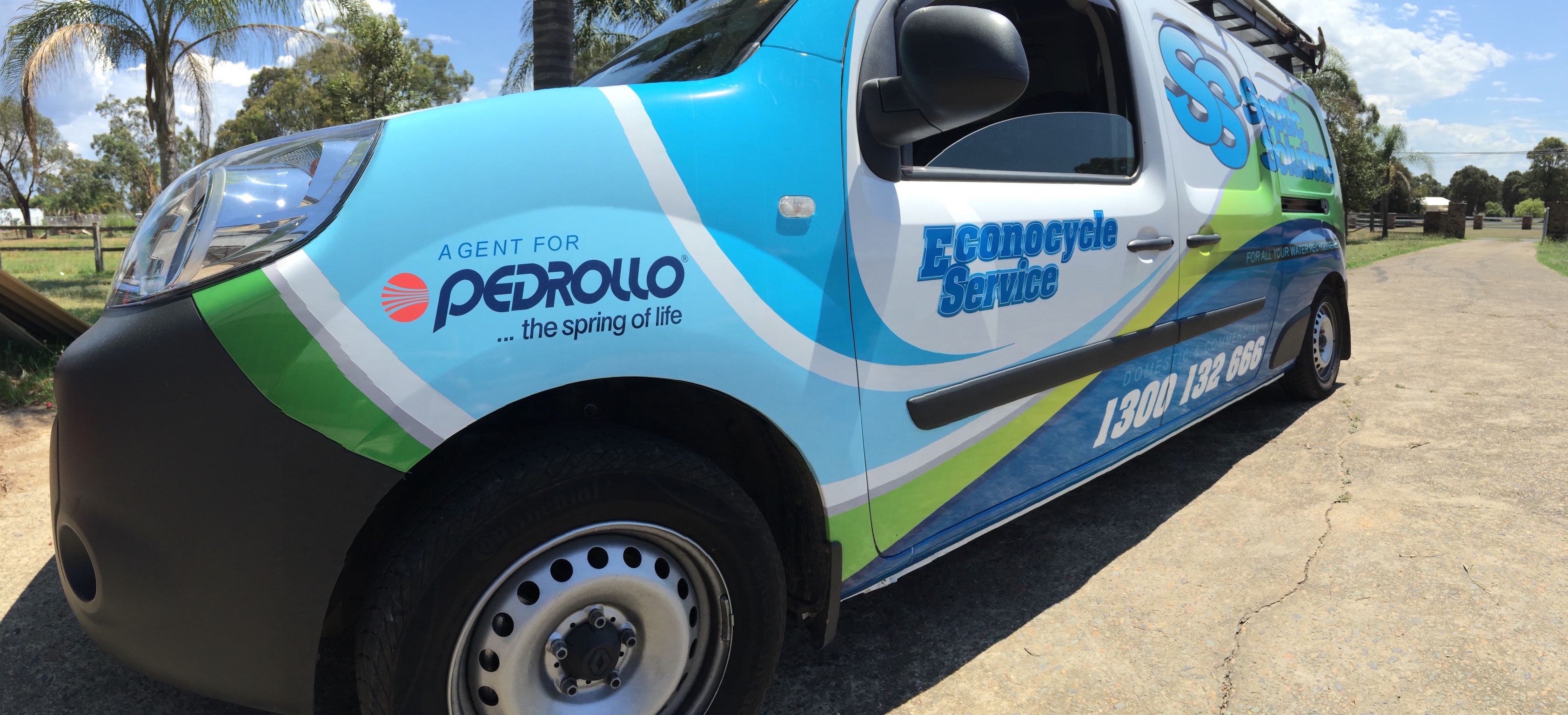



Search Our Site
CONTACT US: 1300 132 666 EMAIL: service@septicsolutionsaustralia.com.au
Frequently Asked Questions
What is an AWTS?
AWTS stands for Aerated Wastewater Treatment System. It is a system used to treat sewage and liquid wastes via a series of treatment chambers combined with an irrigation system. An AWTS enables people living in unsewered areas to treat and utilise the wastewater in irrigation.
How Does an AWTS Work?
Wastewater from a household is treated in stages via several separate chambers. The first chamber is similar to a conventional septic tank where the wastewater enters and the solids settle, forming a sludge layer. Scum collects at the top, and the partially-clarified wastewater flows into a second chamber. Bacteria breaks down the solid matter in the sludge and scum layers (anaerobic).
In the second chamber the wastewater is mixed with air to assist the existing bacteria to further treat it (aerobic).
A third chamber allows additional clarification via the settling of solids, which are returned for further treatment to either the septic or aeration chamber. The clarified effluent is disinfected in another chamber (usually by chlorination) before irrigation can take place.
How often does my AWTS need servicing?
The system must be serviced every three months, as required by the NSW Health Department and local Councils.
How often will my AWTS need a desludge?
Your AWTS will need a desludge when the scum and sludge form layers that become too thick, preventing the system from working at its optimum. As part of the quarterly report our technicians will advise whether a desludge is required. Sludge build up depends upon many things, including the number of people in the household and product usage. As a result the frequency can vary anywhere between five and 20 years.
Why does my AWTS smell?
There are a number of reasons why your AWTS may smell. These can include:
- The air blower may not be working or may not be working to its full capacity. Check your alarm panel to see if it is indicating a problem and, if so, phone us on 1300 1ECONO (1300 132 666).
- Anti-bacterial products and/or medication have entered the system. Avoid all products that contain bleach, anti-bacterial agents and ammonia, such as antibacterial solutions, bleach and toilet cleansers. Aerated systems, like all sewage treatment/disposal systems, are biological. This means that if a product kills bacteria in the house, it will also kill the bacteria that carry out the sewage treatment. Contact us for a list of products we have found to be safe for you to use with your AWTS.
- Overuse. Try to spread your water use (in particular, your loads of washing) over the course of the day. If in doubt, give us a call on 1300 1ECONO (1300 132 666) and we will talk you through the checking process over the phone.
My alarm panel is on and beeping – what do I do?
The first thing to do is check which light is on (see below). Then press the alarm mute button – in most cases, the alarm will reset in 24 hours.
Low Air Alarm: Check the air blower to see if it’s working (stand next to the box on top of your tank and you should be able to hear the air blower humming away). If it’s not working, phone us on 1300 1ECONO (1300 132 666) as the air blower could be in need of repair or replacement.
High Water Alarm: Press the alarm mute button – again, in most cases the alarm will reset in 24 hours. Also:
- Check your irrigation line for any kinks, especially if mowing or other work has been carried out in the yard
- Ensure irrigation taps are turned on.
- If you have sub-surface or underground irrigation, there will be a correlating filter. Turn the pump off at the power point to avoid being sprayed. Ensure the filter is clean. Only turn the pump back on once it is clean
- Check your sprinkler outlets for any blockages and clear if necessary.
Please note that the high water alarm can indicate pump failure. If you have carried out the steps above and your AWTS is still not pumping out, please phone us immediately on 1300 1ECONO (1300 132 666).
What are some of the things I should avoid putting into my system?
- Don’t put bleaches, disinfectants, whiteners, nappy soakers and spot removers in large quantities into your AWTS via the sink, washing machine or toilet (instead use biodegradable liquid detergents such as concentrates with low sodium and phosphorous levels)
- Don’t allow any foreign materials such as nappies, baby wipes, sanitary napkins, condoms and other hygiene products to enter the system
- Don’t use more than the recommended amounts of detergents
- Don’t put fats and oils down the drain. Wipe grease out of pans before washing and use hot water to prevent a build-up of grease in the sink
- Don’t put food waste in your system – use a sink strainer
- Don’t switch off power to the AWTS, even if you are going on holidays (if you are away for over a month, please let us know).
What are some of the other warning signs that there may be problems with my system?
Be sure to keep an eye out for the following warning signs:
- Water that drains too slowly
- Drain pipes that gurgle or make noises when air bubbles are forced back through the system
- Sewage smells
- Water backing up into your sink (this may indicate that your system is already failing)
- Black coloured effluent in the irrigation area
- Excess noise (or no noise) from the blower or pumping equipment
- Poor vegetation growth in the irrigation area, and
- Odour problems from a vent.
Regular servicing of the system can prevent most problems.
Can I use my water as usual?
Your AWTS can become overloaded, which can result in wastewater backing up into your house, contamination of your yard with improperly treated effluent, and effluent from your system entering a nearby river, creek or dam. Reducing water usage will lessen the likelihood of this occurring. Conservative water use, and spreading water use evenly throughout the day, will reduce the amount of wastewater produced and requiring treatment.
What plants can I use in my irrigation/disposal area?
If covered with vegetation, your irrigation area will operate more efficiently. The list below is a general guide, but contact your local nursery for specific guidance. You are best to choose plants that will flourish in the local soil type and cope well with daily doses of nutrient-rich wastewater.
Perennials
- Agapanthas
- Canna
- Gazania
- Umbrella Grass
- Helleborus (Christmas Rose)
- Hosta (Plantain Lilly)
- Shasta Daisy
- Marguerite Daisy
- Mazus
Shrubs
- Aucuba
- Bauera
- Callistemon
- Bottlebrush
- Coprosma
- Cordyline
- Flax
- Strelitzia
- Photinia
- Viburnum
Ground covers
- Grevillea
- Bougainvillea
Grasses and climbers
- Kikuyu
- Buffalo
- Kennedya Hardenbergia
Be sure not to use your system to irrigate vegetables or fruit.
Got a question?
If you have a question that isn’t listed here, please don’t hesitate to contact us. A member of our team will be happy to point you in the right direction.
- You are here:
- Home /
- FAQ

